Comics in comics
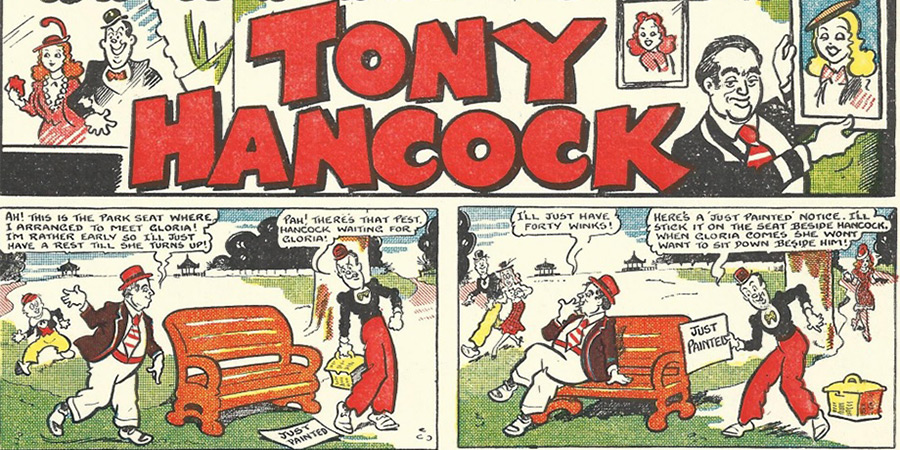
Like many of my generation I was weaned on comics. Not just the classic fare of the Beano and Dandy but the whole colourful crazed gamut - Buster, Topper, The Beezer, TV Comic, The Eagle, Sparky, Whizzer & Chips, TV 21, Tiger.
I even sampled the worthier Look and Learn and World of Wonder, for while their strips were more solemn and educational the medicine of their didactic was sweetened by wild and dramatic full-colour pictures of rockets blasting off or Vikings wielding broadswords.
The fact that the weekly ritual of trotting down to the local newsagent with sixpence clasped in my hot anticipatory digits was often the highlight of my week is proof enough that my hunger for the pictorial shenanigans of the Bash Street Kids and Billy Whizz was insatiable.
I later ended up writing for children's television and it was partly the vast repository of the visual comedy found in comics still lurking in my subconscious that I drew on when concocting routines for the Chuckle Brothers and my later CBBC series, Scoop.
But there was another genre of comic that also crept into my cranium. Older, with slightly more antiquated names like The Magnet, Boy's Own, Chums, Picture-Goer, and Film Fun. These were of course my father's old weeklies, some of which he had saved from his youth. They sat stacked on our bookshelves like layers of treasures in an archaeological trench, waiting to be rediscovered. So when I'd exhausted my latest, up-to-the-minute edition of The Dandy, I'd pull out one of these more antique organs. Some were too frayed and faded of course, and those I'd ignore, but the sturdier annuals I would feast on in fascination. Some were not that old - and it was the more recent Film Fun annuals from the 1940s & 50s that resonated with me most.
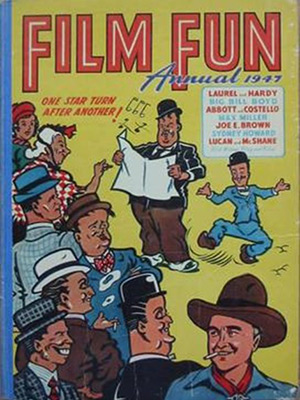
For these contained a multitude of strips of comedians: TV stars, film stars, icons of both the big screen and the fledgling small screen (BBC TV had only taken off as a mass medium after 1953 of course with the Coronation, and ITV was the new kid on the block from 1955).
Film Fun had been launched way back in 1920 when sound pictures were but a dream in an inventor's eye, but from the start it was comedians that dominated the content, for humour was always the central raison d'etre.
In the early decades it was Harold Lloyd and Laurel & Hardy whose antics were recreated in this alternate universe of illustrated slapstick and adventure. They were later joined by Abbott & Costello, Joe. E. Brown, Arthur Lucan of Old Mother Riley fame, and a host of others.
The magazine's early evolution was chequered - it merged and split and merged again with a regularity that resembled the fluctuating line-up of King Crimson. Picture Fun, Kinema Komic, and Film Picture Stories were just three august organs it absorbed over the years.
Hollywood dominated at first of course: until the late 1930s with the explosion of British comedians on the big screen such as Will Hay, and George Formby, the diet of most British cinema-goers was still US-made movies - Lloyd, Chaplin, Keaton, Laurel, W.C. Fields (though of course two of those giants were British).
But in the 40s and 50s the Brits began to prevail - George Formby, Max Miller, Lupino Lane, Red Skelton, then Terry-Thomas, Sid Field, Frank Randle, Morecambe & Wise, Tony Hancock, Sid James, The Goon Show, Frankie Howerd, Tommy Cooper, Arthur Lucan, Ken Dodd, Harry Secombe, Dickie Henderson and Bruce Forsyth; all were immortalised on the pages of Film Fun.
Whilst the style of these strips were of the standard slapstick knockabout fare familiar to readers of The Beano, they contain an extraordinarily rich history of how comedians were perceived, and also elements of their stage and variety personae that have often been lost. Laurel & Hardy, drawn by Freddie Crompton, and Will Hay drawn by Bertie Brown were staples of the Film Fun in the 1940s, but the explosion of television in the 50s spawned a plethora of new strips.
It is testimony to the fame of Tony Hancock that he made it on to the front cover of Film Fun in 1960 without actually being a film star.
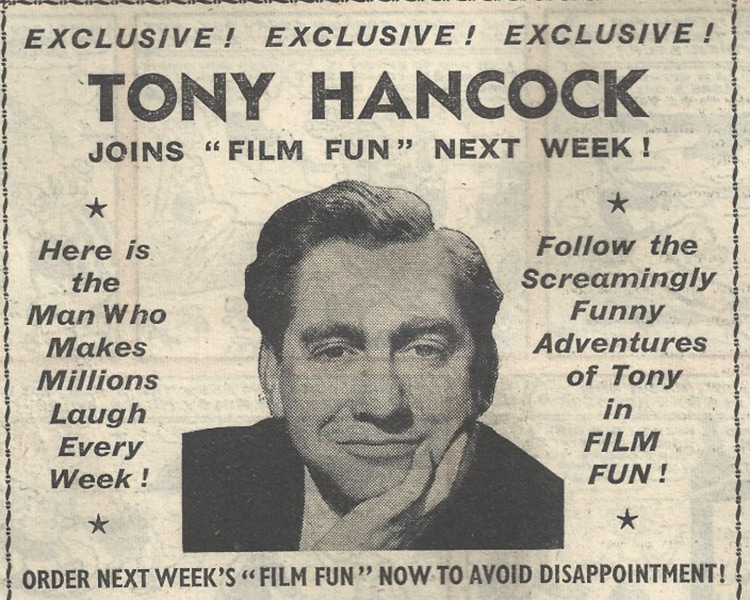
With his television series Hancock's Half Hour attracting record viewing figures in the relatively new medium, it was the new generation of post-war comics - or the demob comedians as they became known - that now greeted the eager reader each Friday. The Tony Hancock Comic Strip first appeared in July 1958 and ran through to September 1962, a total of 218 editions.
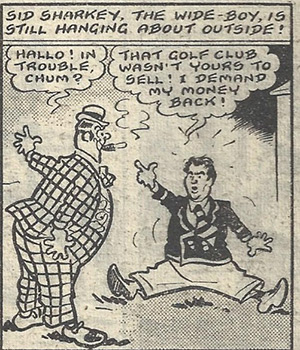
Artist Terry Wakefield was assigned to draw the Hancock strip. Like many cartoonists of the time, Wakefield was self-taught. Born in Hackney, he took over drawing the Laurel & Hardy strip from his father at Amalgamated Press, and went on to immortalise George Formby, Red Skelton and Peter Sellers.
At first appearing without his regular screen cohort Sid James, Hancock's early pictorial adventures set him against various shady underworld figures - chiefly a wide-boy spiv tellingly named Sid Sharkey, clearly based on the James-Hancock dynamic.
The plots closely mirrored the radio and TV series in that Hancock was portrayed as a deluded mug ripe for exploitation, but by 1960 Sid James had joined him in the strip and their relationship softened exactly as it had on television. Although there remained an element of trickery on the part of Sid, a thread of companionship became a permanent fixture, with them both living at 23 Railway Cuttings and helping each other out in their various scrapes.
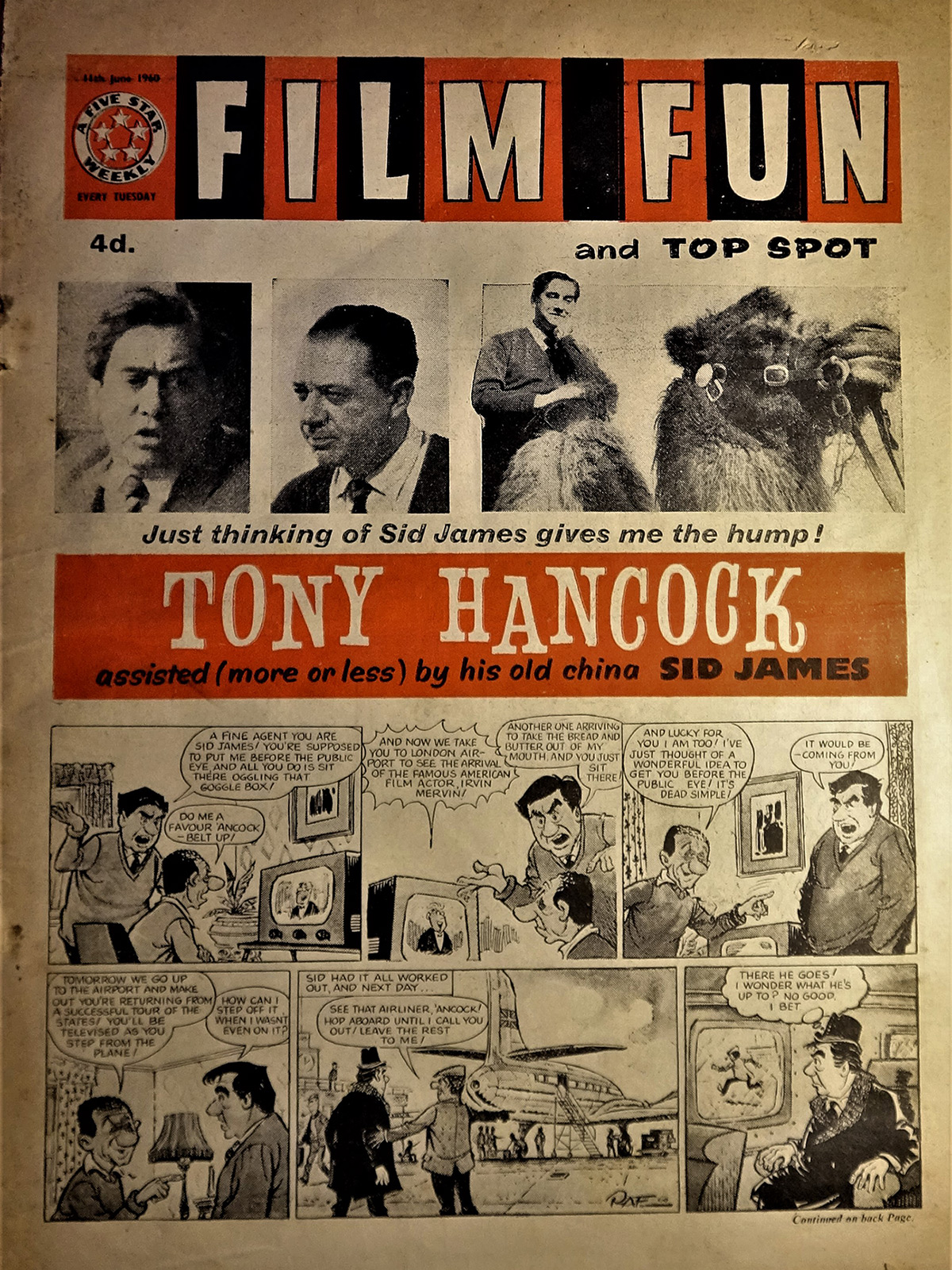
By the early Sixties the Hancock strip had attained a realism of both plot and line that mirrored the TV show.
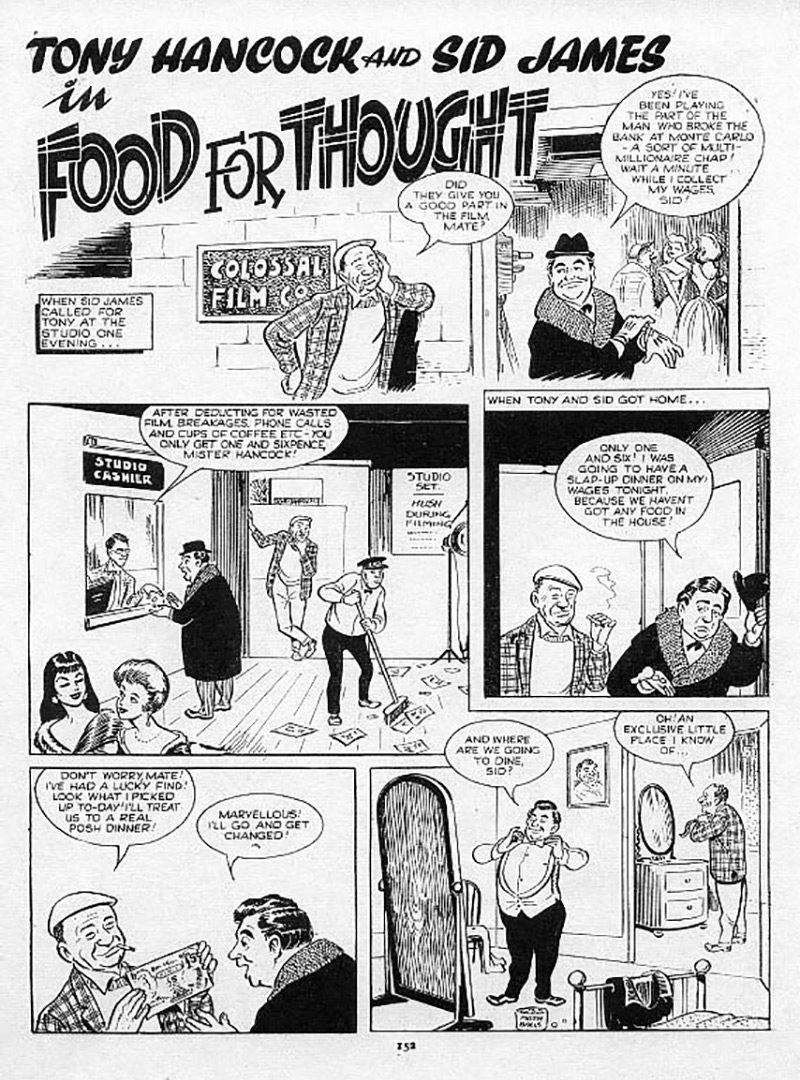
Another of Terry Wakefield's creations was the raffish, swaggering dandy of the silver screen Terry-Thomas. The moustachioed cad had become a household name in the Fifties and accordingly graced the front cover of Film Fun until Hancock toppled him from that pedestal. Billed as the 'Boulting Brothers Star', his strip captured perfectly his on-screen persona - that of the grandiloquent yet slightly seedy ladies' man. "Well, what a healthy looking lass. Who are you?" drawled his catchphrase from the front page. As with Hancock the strip was of necessity replete with slapstick and outlandish plots but the engine of each story was powered by Terry-Thomas' perceived major traits - lust and laziness.
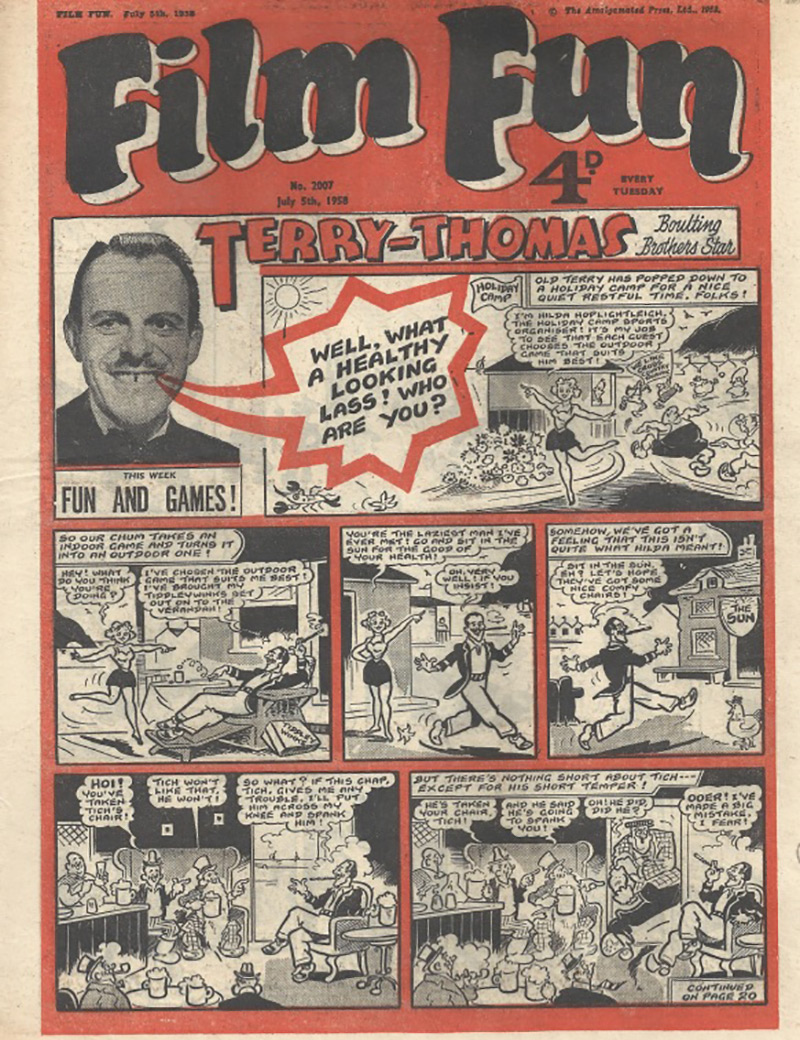
Harry Secombe's rise to the rarefied heights of the comic strip came off the back of his launch into films in the late 50s with 1958's Jet Storm alongside Dame Sybil Thorndike, and the lead role in Ealing Studios' Davy. His fame as a Goon had of course catapulted him to the front rank of variety entertainers - in the first half of the decade the wireless was king and could create household names far more easily than the fledgling medium of TV. While his comic persona was perhaps less complex and rich than the lugubrious, deluded Hancock or the caddish Terry-Thomas, the bright-and-breezy everyman with his eager-to-please sparkle and maniacal edge was captured in a series of comic strips that utilised a certain pantomimic element. He was very often 'off on a journey' to seek his fortune, meeting various obstacles on his way.
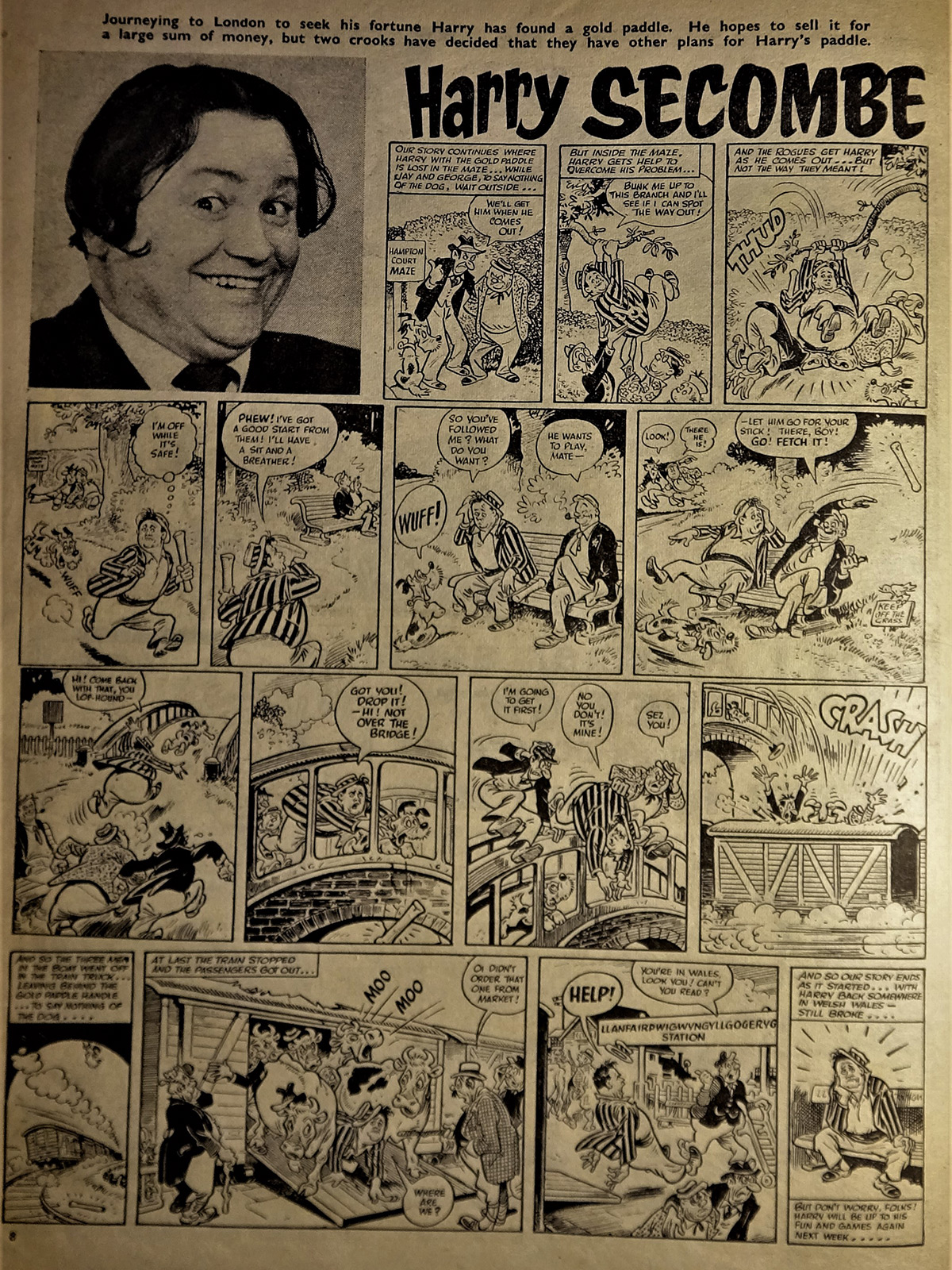
Ken Dodd was another comedian whose absence of film career did not preclude him from enjoying a long-running strip in Film Fun. Doddy's rise was stratospheric: he made his first professional appearance at the Nottingham Empire in 1954 and a mere five years later he was topping the bill at Blackpool and had secured a BBC television series, The Ken Dodd Show, which ran for ten years until 1969. On-stage, Dodd was a fast-talking surrealist whose flights of fancy, delivered at machine-gun pace, elevated the soul of the audience to heights of hysteria.
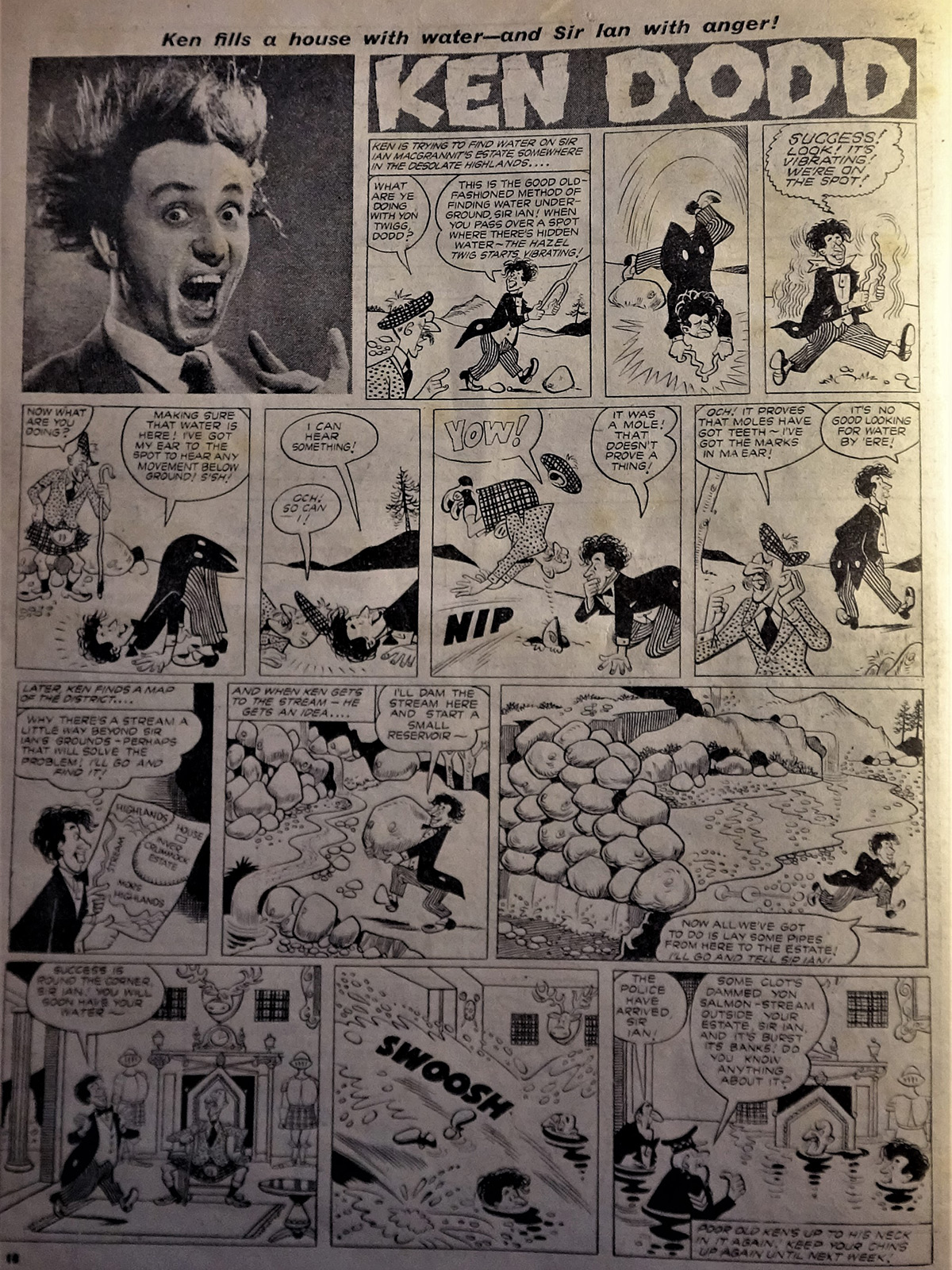
On the pages of Film Fun, it must be said that his antics were a weaker shadow of this live persona. As with Hancock, Secombe et al, the comedy was high-octane visual slapstick, but there was an odd rationale to Doddy's actions that belied his more fantastical and conceptual routines in real life. As with the other comedians who found their way onto the pages of Film Fun, it was them against the world, but this never quite rang true for Dodd: his live persona was that of one who was always in charge.
When Film Fun folded in 1962 - or rather, merged with Buster in the way that many comics did - it was the end of an era. Comedians remained in the forefront of popular culture, but it was left to TV Comic, which ran from 1951-1984, to continue the tradition of converting screen stars into pictorial heroes.
While comedy performer and pantomimist Richard Hearne, as Mr Pastry, enjoyed long-running success in the paper, along with another reincarnation of Laurel & Hardy, and later, Rod Hull & Emu, it was series rather than solo comic characters that TV Comic focused on. The age when comedy stars were also kings of comics was over.
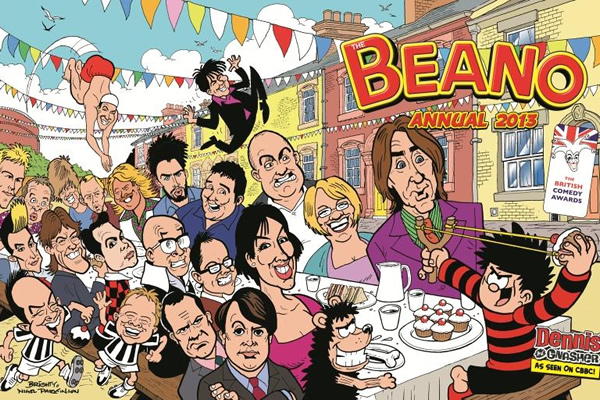
In more recent years the tradition was revived, however, by no less than the Beano, whose 2013 75th anniversary featured a plethora of comedians on its celebration cover: Jimmy Carr, Sarah Millican, David Mitchell, Peter Kay et al.
And Harry Hill received the ultimate accolade of being appointed special editor, followed by his own regular joke page. Hill's foray into children's television with Shark Infested Custard and his bumper joke books for kids was the engine of this venture, as well as his huge mainstream Saturday tea-time success with Harry Hill's TV Burp.
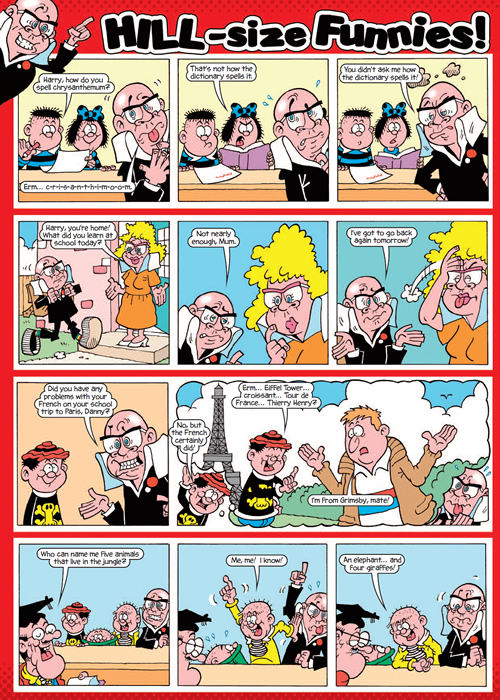
It was the revival of a long tradition, but also perhaps its epitaph. The evolution of comedy, and stand-up in particular, from the broader style of the variety stage to the more cerebral acts of the Nineties and 2000s, signalled the end of the easy crossover from live comedian to strip-cartoon.
In addition to the decline of the comic itself - the Beano is the only humorous paper for children still published - few comedians today dominate popular culture in the way Tony Hancock and Ken Dodd did. The atomising of channels, the changes in the way we consume comedy, and the decline of eccentricity and slapstick from the comedy landscape - have made it difficult, if not impossible, for the comedian to straddle the twin worlds of both stage and page - if such pages were to exist.
We are left with frayed editions on old bookshelves, and in Denis Norden's words, 'the echo of remembered laughter'.
Julian Dutton's latest book, The Parade's Gone By: everyday life in Britain in the twentieth century, is out now, published by Furnival Books.
Help us publish more great content by becoming a BCG Supporter. You'll be backing our mission to champion, celebrate and promote British comedy in all its forms: past, present and future.
We understand times are tough, but if you believe in the power of laughter we'd be honoured to have you join us. Advertising doesn't cover our costs, so every single donation matters and is put to good use. Thank you.
Love comedy? Find out more
